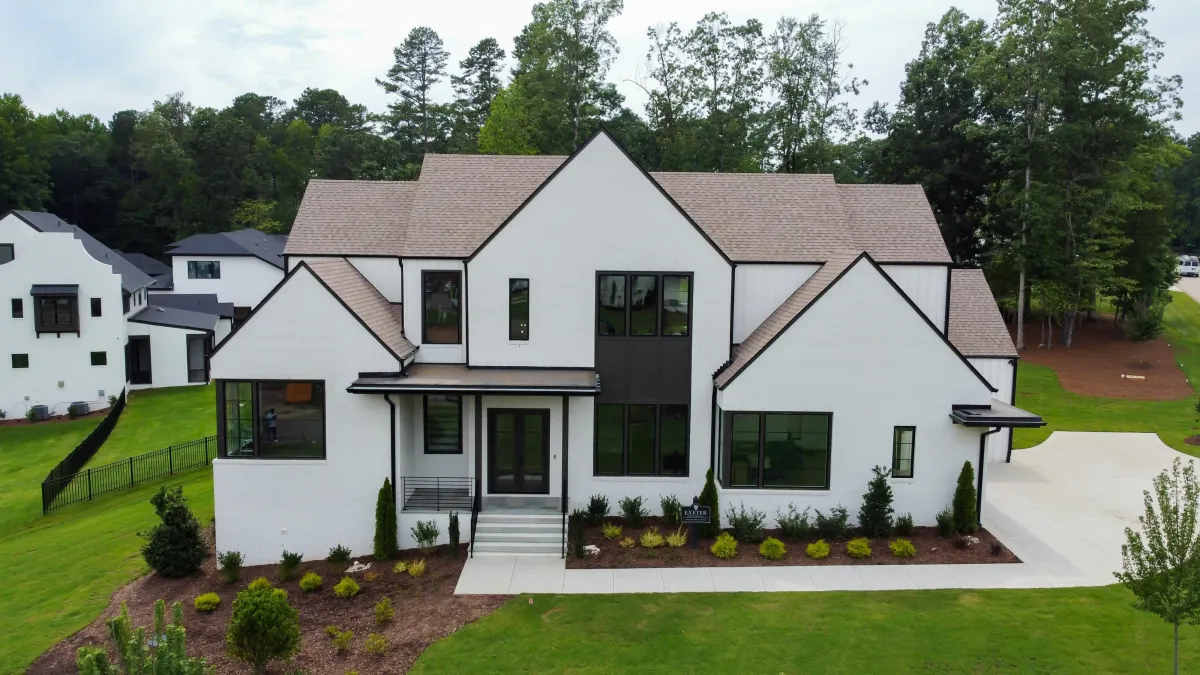
The Home Building Timeline for Custom Plans Explained Simply
Building a custom home is a complex journey that unfolds in several carefully planned phases, each building on the last to create a seamless blend of structure, function, and style. From the initial design concepts through site preparation, foundation and framing, exterior and interior finishes, landscaping, and final touches, every step is essential to bringing your vision to life. Understanding these key phases helps homeowners set realistic expectations, anticipate timelines, and stay informed throughout the process, ultimately ensuring a smoother build and a home that perfectly fits their needs.
What Are the Key Phases in the Custom Home Building Timeline?

Custom home construction unfolds in six main phases: design, pre-construction, foundation and framing, roofing and exterior, interior finishes, and landscaping with final touches. Each phase builds upon the previous one to ensure structural integrity and aesthetic cohesion.
What Happens During the Design Phase of Custom Home Building?
In the design phase, architects and designers create your home’s blueprint, floor plan, and aesthetic vision. They produce construction drawings, select materials like concrete for foundations, wood for framing, and plan duct routing and electrical layouts. Typically, this phase takes 4–8 weeks. Clear design decisions help streamline permitting and bidding.
How Does Pre-Construction Prepare Your Site and Permits?
Pre-construction prepares the lot by clearing, grading for proper drainage, and verifying crawl space conditions. During this phase, builders secure permits by submitting plans to local authorities for building code compliance, utility hookups (electrician, telephone, energy), and environmental assessments. This phase usually spans 3–6 weeks and is crucial for avoiding delays when beginning the foundation.
What Is the Timeline for Foundation and Framing?
The foundation and framing phase establishes the home’s structural skeleton. Excavation, setting footings, and pouring a concrete slab or basement foundation generally take 2–3 weeks. Framing the walls, roof trusses, and subfloor typically takes 3–5 weeks. This stage also includes rough-in work for plumbing, HVAC ductwork, and electrical wiring, with coordinated subcontractors ensuring progress.
How Long Does Roofing and Exterior Work Take?
Roofing, siding, and other exterior finishes protect the home. Installation of roof shingles or stucco, siding or exterior trim, and fitting of windows and doors generally takes 2–4 weeks. Energy-efficient roofing materials or accessibility features may extend the timeline slightly, but once completed, exterior work allows interior tasks to begin regardless of weather.
What Are the Steps and Duration of Interior Finishes?
Interior finishes transform the structure into a livable home. Tasks include drywall installation, painting, flooring (wood, carpet, tile), cabinetry, countertop installation, lighting fixture placement, and bathroom fittings such as showers and tubs. This phase takes about 8–12 weeks as various subcontractors work sequentially. Coordination with home automation installation and adherence to building codes is also addressed here.
When Does Landscaping and Final Touches Occur?
Landscaping, driveway paving, site cleanup, and punch list completion come last, typically taking 2–4 weeks. Final inspections result in the certificate of occupancy, and a homeowner walkthrough verifies that floor plans, wall finishes, and fixtures meet expectations. Any remaining tasks, like drainage adjustments or final paint touch-ups, are completed before move-in.
How Long Does It Typically Take to Build a Custom Home?

On average, a custom home takes 8–12 months from groundbreaking to occupancy. The timeline depends on project scale, material lead times, and site complexity. The entire process generally spans 8–12 months, with the design phase taking 4–8 weeks and pre-construction 3–6 weeks [1][2][3] according to the National Association of Home Builders, "Custom Home Building Process" (2024)
What Is the Average Duration for Each Construction Phase?
The custom home building process typically unfolds over 28 to 42 weeks, not including final inspections and handover. Here's a breakdown of the average duration for each phase:
Design: 4–8 weeks
Pre-Construction: 3–6 weeks
Foundation & Framing: 5–8 weeks
Roofing & Exterior Work: 2–4 weeks
Interior Finishes: 8–12 weeks
Landscaping & Final Touches: 2–4 weeks
While these ranges can vary based on project scope, weather, and material availability, the full timeline generally fits within an 8–12 month schedule from groundbreaking to move-in.
Which Factors Most Affect the Overall Timeline?
Delays can result from slow permit issuance, weather disruptions, scheduling of subcontractors, and material availability. Sustainable practices—like energy-efficient insulation or specialty windows—may extend lead times slightly but reduce long-term operating costs.
How Do Sustainable Building Practices Impact the Timeline?
Using green materials such as solar arrays, high-performance windows, and sustainable wood can add 2–4 weeks for procurement and certification compliance. These materials improve energy efficiency, reduce utility bills, and increase resale value.
What Are Common Causes of Delays in Custom Home Construction?

Delays often arise from permitting issues, supply chain disruptions, or weather events. Proactive planning and clear communication help minimize these risks. Delays can occur due to slow permit reviews, material shortages, and adverse weather U.S. Department of Housing and Urban Development, "Construction Delays and Mitigation Strategies" (2023)
What Permitting and Approval Delays Should Homeowners Expect?
Permit delays may be caused by required plan revisions, energy code proofs, or environmental reviews. Depending on the locality, obtaining permits can take 4–12 weeks. Working with local code experts can reduce these delays.
How Do Material Availability and Weather Affect Progress?
Shortages of key items—such as roofing shingles, electrical panels, or tiles—can halt progress until supplies arrive. Extreme weather can hamper excavation, the curing of concrete, and other outdoor work. Pre-ordering long-lead items and scheduling work in favorable seasons can help manage these issues.
What Are Effective Strategies to Avoid or Manage Delays?
Develop contingency plans with subcontractors.
Include buffer periods in the schedule for inspections and rework.
Secure critical materials through early contracts.
Use digital project management tools for real-time updates.
How Does Project Management Keep Your Custom Home Building on Track?
A dedicated project manager oversees every phase, coordinating trades and monitoring budgets to maintain timelines and quality standards.
What Role Does a Dedicated Project Manager Play?
The project manager acts as the main liaison among architects, engineers, subcontractors, permitting authorities, and homeowners. They schedule inspections, approve progress payments, manage the punch list, and enforce safety protocols—all to ensure timely and quality construction.
How Is Progress Tracked and Reported to Homeowners?
Homeowners receive weekly status reports outlining completed work, upcoming tasks, and any necessary schedule adjustments. Tools like Gantt charts, photo logs, and budget spreadsheets create transparency and facilitate proactive decision-making.
How Are Problems and Changes Handled During Construction?
When changes arise, a formal change order process is followed: scope modifications are identified, cost estimates obtained, schedules updated, and homeowner approval secured. This helps prevent scope creep and ensures clear financial management.
What Are the Typical Costs and Budget Considerations Along the Timeline?

Building a custom home involves aligning costs with construction milestones. Budgeting carefully—with contingency reserves—is essential for smooth cash flow and project success.
How Are Costs Distributed Across Each Building Phase?
Entity Attribute Value (% of Total)
Design & Permits Cost Allocation 8–12%
Site Work Cost Allocation 5–8%
Foundation & Framing Cost Allocation 20–25%
Exterior Finishes Cost Allocation 10–15%
Interior Finishes Cost Allocation 30–35%
Final Touches Cost Allocation 5–10%
Cost Distribution in Home Construction
Design and permits, site work, foundation, and interior finishes form significant portions of the budget with additional reserves for unforeseen expenses [1][2][3]. Remodeling Magazine, "Cost vs. Value Report" (2024)
What Contingency Planning Should Homeowners Prepare For?
It is recommended to set aside 5–10% of the budget for unexpected expenses such as soil remediation, material backorders, or code upgrades.
How Do Sustainable Materials and Practices Affect Costs?
Green features like energy-efficient HVAC systems, solar installations, and high-performance insulation typically add 5–15% to initial costs but provide tax incentives, lower energy bills, and boost property value.
How Can Homeowners Prepare for Each Phase of the Custom Home Building Timeline?

Active homeowner involvement is essential for keeping a custom home project on schedule and aligned with the original vision. From making timely design decisions to reviewing progress and communicating with the build team, engaged homeowners play a pivotal role in ensuring the finished home reflects their goals, preferences, and lifestyle.
What Decisions Are Needed During the Design Phase?
Homeowners make decisions on floor plans, structural elements (such as choosing between a crawl space or a full basement), mechanical systems (duct layouts, roof pitch), and aesthetic details like countertops, lighting fixtures, and cabinetry. Timely decisions help avoid costly redesigns.
How Should Homeowners Plan for Pre-Construction Requirements?
Early preparation includes securing financing, purchasing builder’s risk insurance, and finalizing site surveys. Coordinating with lenders and title companies ensures that funds and land records are in order before work begins.
What Should Clients Expect During Construction and Finishing?
During interior phases, decisions regarding paint colors, tile styles, and hardware are made on-site. Regular site visits and reviews of sample installations help ensure that the finishes meet homeowner expectations.
How to Plan for Move-in and Final Walkthroughs?
As construction wraps up, homeowners should schedule a final walkthrough to inspect the punch list, checking outlets, faucets, light fixtures, flooring seams, and the certificate of occupancy. Coordinating movers, setting up utilities, and reviewing warranty documentation help facilitate a smooth transition.
Frequently Asked Questions
Q: How long does it typically take to build a custom home?
A: Most custom homes take between 8 to 12 months from design to final move-in, depending on project size, complexity, and site conditions.
Q: What are the main phases of building a custom home?
A: The key phases include design, pre-construction/site preparation, foundation and framing, roofing and exterior work, interior finishes, and landscaping with final touches.
Q: Why is the design phase so important?
A: The design phase sets the blueprint for your entire project. It defines floor plans, architectural style, material selections, and systems layout, helping prevent costly changes later.
Q: What happens during pre-construction?
A: Pre-construction involves preparing the site by clearing and grading, securing permits, and scheduling subcontractors to ensure a smooth start to building.
Q: How do delays typically occur in custom home builds?
A: Common causes include permit approval wait times, material shortages, weather interruptions, and scheduling conflicts among contractors.
Q: Can sustainable or green building features affect the timeline?
A: Yes, incorporating energy-efficient materials or specialty systems can add a few weeks for procurement and certification but often results in long-term savings and higher resale value.
Q: How involved should I be during the construction process?
A: Homeowner involvement varies, but staying engaged through regular updates, site visits, and timely decision-making helps keep the project on track and aligned with your vision.
Q: What role does a project manager play in custom home construction?
A: A dedicated project manager coordinates all trades, manages schedules and budgets, communicates progress, and helps resolve issues to ensure quality and timeliness.
Q: How are budgets typically managed throughout the build?
A: Budgets are aligned with construction milestones, and it’s recommended to keep a contingency reserve of 5–10% for unexpected costs.
Q: What should I expect during the final walkthrough?
A: The final walkthrough allows you to inspect the home, verify completed work, identify any remaining issues (punch list), and prepare for move-in.


